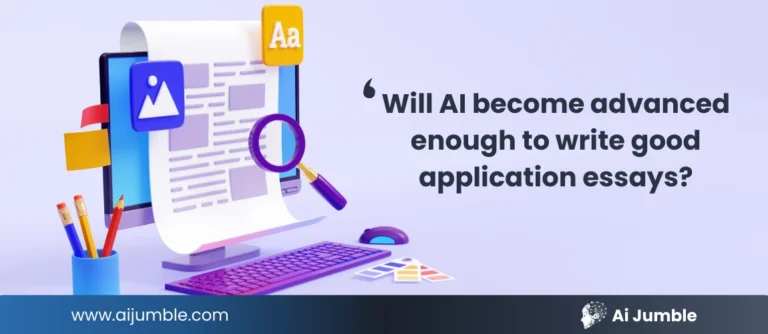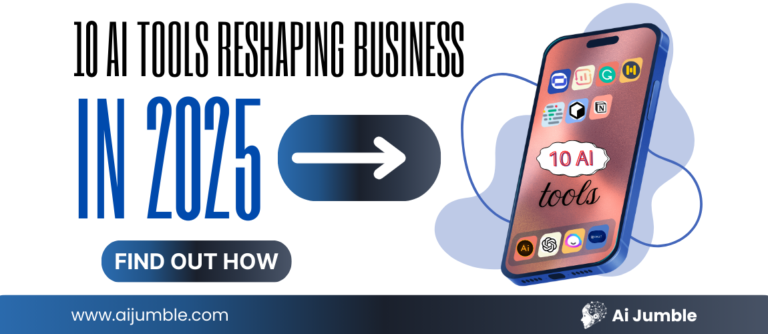In today’s ever-changing corporate landscape, CEOs are not only embracing Artificial Intelligence (AI) for its technological capabilities but also building a strategic alliance with this transformational problem-solving tool. In the face of enormous difficulties, the incorporation of AI in leadership tactics is an important turning point. This partnership provides a trinity of insights, efficiency, and solutions, altering the very definition of flexibility. As organizations forge ahead into new territory, AI emerges not as a solution but as the innovative force changing the path to success in the current business scene.
This blog will explore how leaders can harness the power of AI, the key traits they need to cultivate, and practical strategies for driving successful AI adoption. By bridging the gap between AI technology and leadership, executives can unlock innovation, enhance decision-making, and future-proof their organizations.
Table of Contents
ToggleThe Evolving Role of Leaders in the Age of AI
Leadership is no longer just about intuition and experience—it’s now intertwined with data and technology.
From instinct to data-driven decisions
Leaders are moving away from gut-based decisions to rely more on AI-powered insights. Sophisticated AI tools enable leaders to forecast market trends, analyze customer behaviors, and identify risks, creating an opportunity for more informed and effective decision-making.
AI as a partner, not a threat
Contrary to fears of AI replacing humans, it’s meant to augment leadership. Successful leaders view AI as a strategic partner that complements their skills, allowing them to focus on high-impact, creative, and empathetic responsibilities.
Key Areas Where Leaders Can Leverage AI
Executives can harness AI in various business functions to drive growth and efficiency.
Strategic Decision-Making
- AI excels in forecasting through predictive analytics.
- Scenario analysis helps assess different outcomes for better planning.
- Platforms provide real-time insights for faster, more accurate decisions.
Top AI Tools for Strategic Decision-Making
1. Tableau
Tableau is a powerful data visualization tool that helps leaders interpret complex datasets. Its intuitive interface and AI-driven insights enable users to identify trends and make data-backed decisions.
2. IBM Watson
IBM Watson provides a suite of AI tools designed to support decision-making processes. Its advanced natural language processing capabilities allow it to analyze unstructured data effectively and deliver actionable insights.
3. Microsoft Power BI
A business analytics tool by Microsoft, Power BI integrates seamlessly with other systems to deliver real-time data insights. Its machine learning features help forecast trends and support advanced decision-making.
4. Google Cloud AI
Google Cloud AI offers a range of tools, including predictive analytics, to assist in evaluating scenarios and outcomes. It’s particularly effective for businesses leveraging cloud infrastructure.
5. SAP Analytics Cloud
This enterprise solution combines business intelligence, predictive analytics, and planning. It enables leaders to simulate scenarios and visualize outcomes to inform strategic moves.
These tools empower leaders with actionable insights, ensuring more confident and efficient decision-making in a rapidly changing business environment.
Talent & Workforce Management
- AI tools measure employee engagement and analyze workforce sentiment.
- Predicts burnout to prevent attrition and identify areas for support.
- Personalizes learning and development plans based on skill gaps and interests.
Top AI Tools for Talent & Workforce Management
1. Workday HCM
Workday Human Capital Management uses AI-driven insights to enhance workforce planning, talent acquisition, and employee engagement. Its predictive analytics help organizations identify skill gaps, track productivity trends, and optimize resource allocation.
2. Eightfold AI
Eightfold AI leverages deep learning to manage talent acquisition, internal mobility, and employee retention. Its advanced algorithms match candidates to roles based on skills, experience, and potential.
3. SAP SuccessFactors
SAP SuccessFactors integrates AI to support performance management, learning programs, and organizational development. It offers tailored recommendations to employees for career advancement and skills development.
4. CultureAmp
CultureAmp combines AI with employee feedback to measure engagement and identify potential risks of attrition. Its insights allow HR teams to address concerns proactively and foster a positive workplace culture.
5. 360Learning
Using AI, 360Learning creates personalized learning journeys for employees. It adapts content delivery based on individual learning preferences and needs, improving knowledge retention and engagement.
These tools collectively enable organizations to better understand their workforce, implement proactive measures, and foster an environment that encourages growth and development.
Innovation & Product Development
- AI simplifies market research by analyzing vast data pools.
- Generates actionable customer insights to tailor products and services.
- Enhances ideation by identifying trends and aligning with consumer demand.
Top AI Tools for Innovation & Product Development
1. IBM Watson
IBM Watson offers powerful AI capabilities that assist in market trend analysis and predictive analytics. It enables businesses to identify emerging patterns, optimize product strategies, and align with customer needs.
2. Google AI Platform
With the Google AI Platform, companies can leverage advanced machine learning tools to analyze consumer data, develop prototypes, and accelerate the product development process efficiently.
3. Salesforce Einstein
This AI-integrated platform allows businesses to gain in-depth customer insights, making it easier to design tailored products and services. Salesforce Einstein also supports automation to streamline development workflows.
4. OpenAI (GPT Models)
OpenAI’s GPT models are useful for generating ideas, conceptualizing innovations, and forecasting trends. These tools support creativity by simulating brainstorming sessions with intelligent suggestions.
5. DataRobot
DataRobot simplifies the AI implementation process by offering pre-built models for predictive analytics. It is highly effective in creating personalized products and understanding market demands through data-driven insights.
6. H2O.ai
H2O.ai specializes in democratizing artificial intelligence with its suite of tools for marketers and product developers. It aids in customer segmentation and product optimization, leading to more impactful innovations.
By utilizing these AI tools, organizations can enhance efficiency, capture valuable insights, and drive successful product development tailored to evolving market trends and consumer preferences.
Leadership Traits for an AI-Driven Future
Leaders must evolve and adapt to thrive in the AI era.
AI fluency and continuous learning
Executives need to understand AI fundamentals and stay updated on emerging technologies. Tools like ChatGPT, DataRobot, and Tableau can help them familiarize themselves with practical AI applications.
Empathy and ethical leadership
Navigating ethical considerations like AI bias and transparency requires a strong moral compass. Leaders must foster trust by prioritizing fairness and accountability in AI deployment.
Agility and an innovation mindset
Adaptive leaders who welcome change and encourage experimentation are better positioned to leverage AI for innovation.
Risks Leaders Must Manage When Using AI
While AI offers immense benefits, it also presents challenges that require careful oversight.
Ethics, bias, and transparency
Leaders must ensure their AI systems operate fairly and avoid reinforcing biases. Clear policies on AI ethics are crucial.
Data privacy and security
Protecting sensitive data is a top concern, as AI tools often rely on significant information. Establish robust cybersecurity measures and compliance protocols.
Over-reliance on automation
Balance is essential—AI shouldn’t replace human judgment entirely. Leaders must ensure systems complement rather than dominate decision-making processes.
Case Studies or Real Examples
Leading organizations are already leveraging AI successfully.
Satya Nadella at Microsoft
Under Nadella’s leadership, Microsoft has embraced AI across products and operations, creating tools like Azure AI and driving innovation.
Internal AI adoption stories
Companies like Amazon and Netflix use AI to personalize user experiences, improve logistics, and predict market demands, setting benchmarks for strategic AI use.
Conclusion: Leading the AI-Powered Organization
The true differentiator in the AI age isn’t technology but the leadership mindset. Leaders who approach AI with openness, curiosity, and a focus on ethical practices can drive meaningful change. Start small—experiment with AI tools, develop AI fluency, and create a roadmap for long-term adoption. By doing so, executives can position their organizations as pioneers in the AI-powered future.
FAQs
AI supports leaders in making data-driven decisions, enhancing efficiency, and discovering new growth opportunities.
Begin with small pilot projects, invest in AI training, and collaborate with experts or consultants to understand how AI fits into your strategy.
Leaders should address AI bias, ensure data privacy, and maintain transparency in AI applications to build trust and accountability.
Have an AI tool to Submit?
AiJumble is the ultimate AI tools hub, featuring 5000+ tools and expanding daily. Get your AI tool listed or explore advertising opportunities to reach the right audience!







